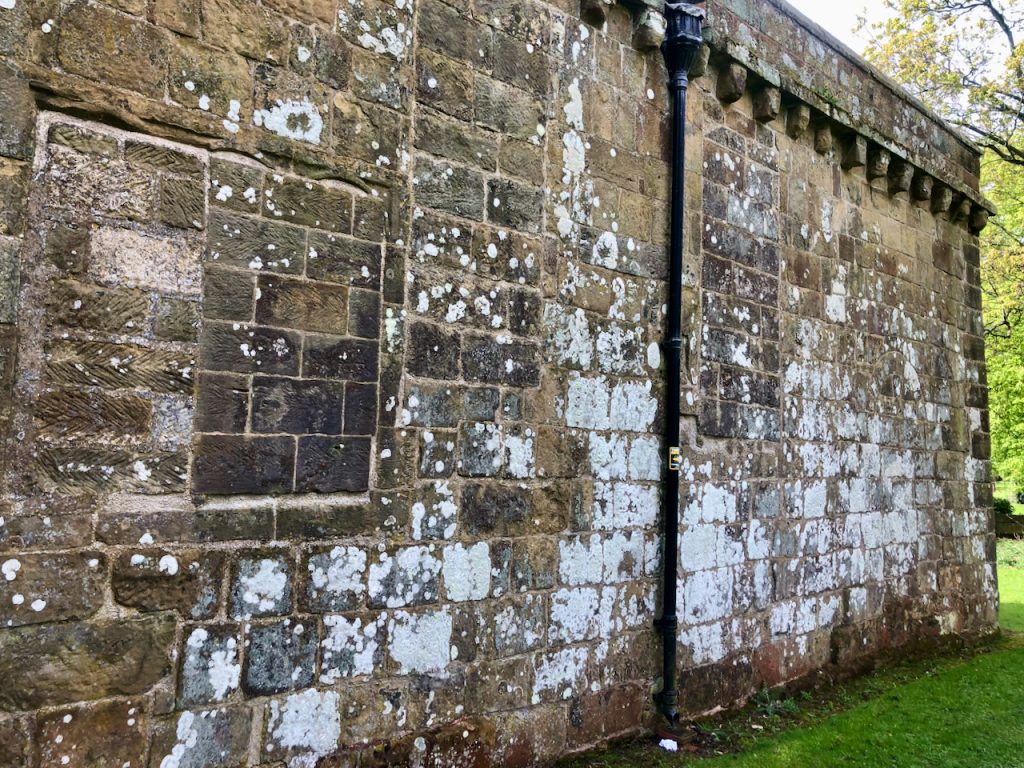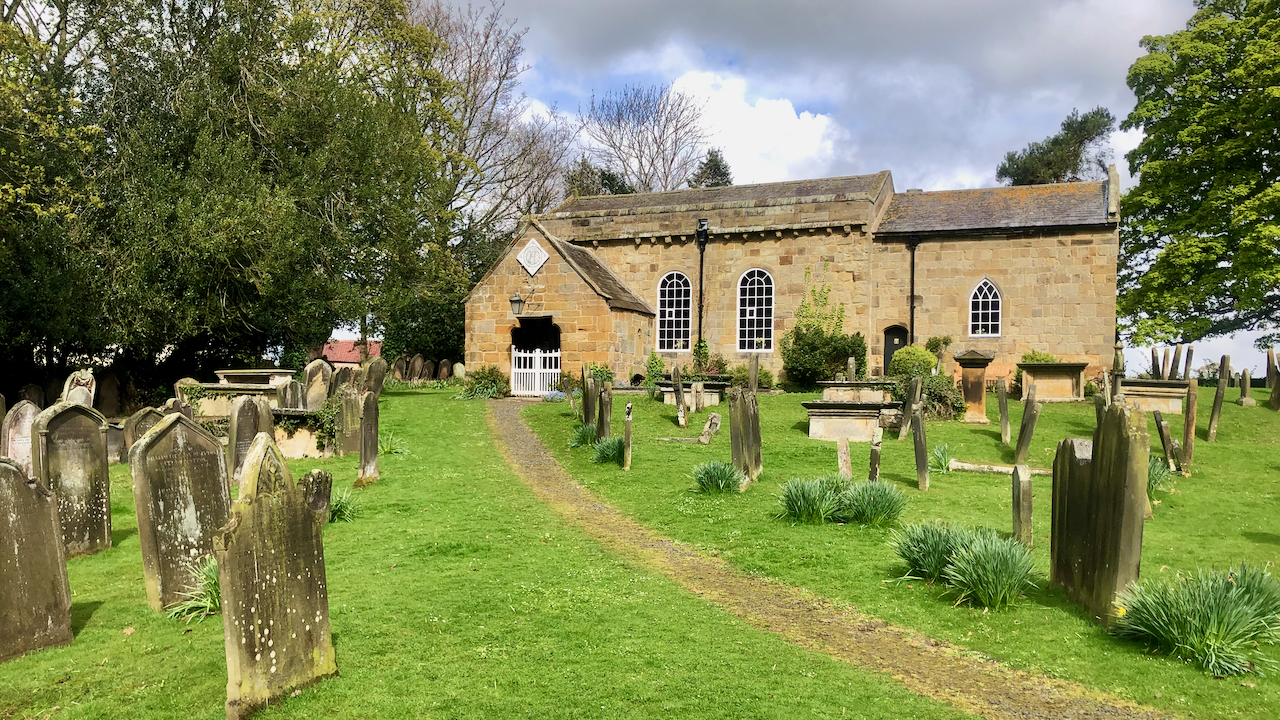The architectual historian Nikolaus Pevsner has this to say about All Saints1Pevsner, Nikolaus. “The Buildings of England – Yorkshire – The North Riding”. Page 172. Penguin Books. Reprinted 1985. ISBN 0 14 071009 9.:—
Nave and chancel. Norman masonry, Norman chancel N window, Norman nave corbel-table, S doorway with two orders of colonnettes, scallop capitals and zigzag in the arch, blocked N doorway. The chancel arch has scallop and spirally volute capitals. But the nave fenestration is of 1790 — large round-headed windows. The contemporary W tower was pulled down c.1880. In the chancel the E windows are probably of the same time.
An interesting hint in there of a long disappeared west tower. The nave was significantly shortened at the same time effectively reducing it by almost a half — imagine the porch being at the centre of the nave. This lost nave contained two galleries, one for the use of the Lord of the Manor, accessed by a separate door — couldn’t mix with the peasants— and the other by the musicians but this recame redundant when the first organ was installed in 1840. This tower had replaced an earlier one, with a steeple, in 17882Arkell, R. and Taylor, D. (2012). All Saints Church. [online] Available at: http://greatayton.wdfiles.com/local–files/churches/All-Saints-Church.pdf..
Pevsner also mentions a blocked up northern doorway. This can be seen on the rear wall — look extreme right with an arched lintol.

This was known as the Devil’s Doorway where the Devil escaped if a child cried during baptism, but probably it would just have been used for processional purposes3Ibid..
Pevesner also refers to a three-decker pulpit and an Anglo-Saxon cross-head with a crucifixus dated to the early 9th-century but as the church was locked, these will have to wait for another day.
Great Ayton is one of the few places locally to have a church mentioned in the Domesday Book, so it must of escaped the wrath of King William in his harrying of the North4o’Sullivan, Dan. “Great Ayton: A history of the village”. Page 24-27. 1983. ISBN 0 9508858 0 0.. It’s reasonable therefore to assume a church existed before the Norman Conquest. But it’s likely that the church at that time was made of wood in spite of the Saxon cross fragment.
One post-war newspaper article states a church at Ayton can be dated back to 627, a rather precise date, but I haven’t been able to verify this5Quiet Old Great Ayton | Cleveland Standard | Thursday 14 April 1949 | British Newspaper Archive. [online] Available at: https://www.britishnewspaperarchive.co.uk/viewer/bl/0003490/19490414/025/0002 [Accessed 12 Apr. 2022].. Many of the architectual features of the present ediface are 12th century confirming Pevsner’s Norman date6British-history.ac.uk. (2022). Parishes: Great Ayton | British History Online. [online] Available at: https://www.british-history.ac.uk/vch/yorks/north/vol2/pp225-231#h3-0003 [Accessed 26 Apr. 2022]..
- 1Pevsner, Nikolaus. “The Buildings of England – Yorkshire – The North Riding”. Page 172. Penguin Books. Reprinted 1985. ISBN 0 14 071009 9.
- 2Arkell, R. and Taylor, D. (2012). All Saints Church. [online] Available at: http://greatayton.wdfiles.com/local–files/churches/All-Saints-Church.pdf.
- 3Ibid.
- 4o’Sullivan, Dan. “Great Ayton: A history of the village”. Page 24-27. 1983. ISBN 0 9508858 0 0.
- 5Quiet Old Great Ayton | Cleveland Standard | Thursday 14 April 1949 | British Newspaper Archive. [online] Available at: https://www.britishnewspaperarchive.co.uk/viewer/bl/0003490/19490414/025/0002 [Accessed 12 Apr. 2022].
- 6British-history.ac.uk. (2022). Parishes: Great Ayton | British History Online. [online] Available at: https://www.british-history.ac.uk/vch/yorks/north/vol2/pp225-231#h3-0003 [Accessed 26 Apr. 2022].

Leave a Reply